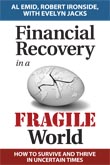Last updated: March 21 2012
Interest rates: Time for policy action?
Interest rates are putting policymakers and politicians between a rock and a hard place. When the Bank of Canada recently left the overnight rate at 1%, it confirmed the likelihood the stable, low-interest-rate environment would continue into 2013. But those same low interest rates have fostered Canada's overvalued real estate market and record levels of household debt.
As TD Bank chief economist Craig Alexander puts it in a recent report, this imbalance "poses a clear and present danger to Canada's medium-term economic outlook.î He calls on policymakers to address the imbalance and take action to minimize the risks associated with the higher interest rates that will eventually, but surely, come.
Certainly, mortgage rates are low enough to make acquiring a home, even at inflated prices, attractive. In a battle for market share, non-bank lenders are offering 10-year closed mortgages around the 4% mark, while bank rates may be a two percentage points higher. In fact, it is currently more expensive to owe Canada Revenue Agency money.
Alexander's concern is highly leveraged households. He notes growth in household debt over the past decade has been fuelled by "real-estate secured loansî such as mortgages and home equity lines of credit. Either sinking house prices or rising interest rates could provide the economic shock that sends Canadians reeling.
"We have estimated,î he writes, "that once interest rates return to more normal levels, more than one million Canadian households (roughly 10% of households that currently have debt) will have to devote 40% or more of their income to making their monthly debt payments ó a level that the Bank of Canada deems puts households in a financially vulnerable position.î
Alexander outlines three option:
ï shorten the maximum amortization on mortgages to 25 years from 30 years;
ï introduce a minimum interest-rate floor on all income tests, say 5.5%, when qualifying for mortgages or home equity loans;
ï raise the minimum down payment modestly, say to 7% from 5%.

